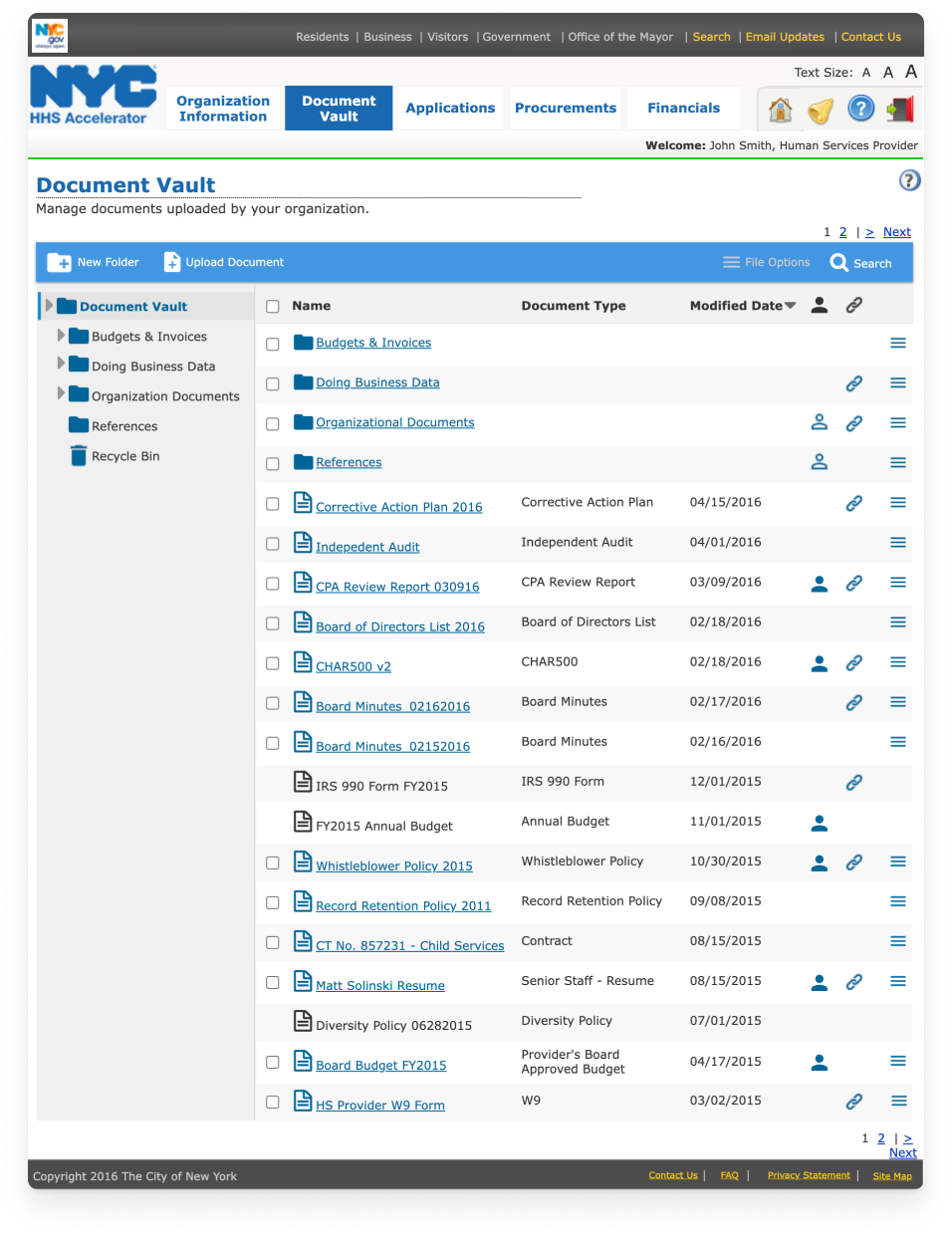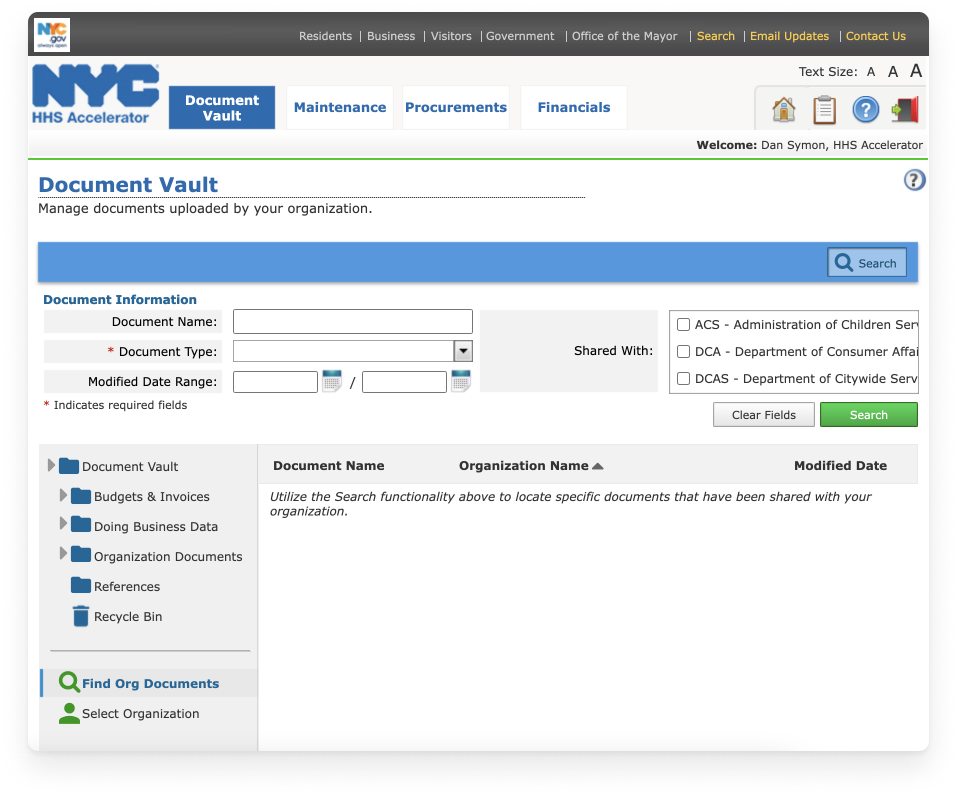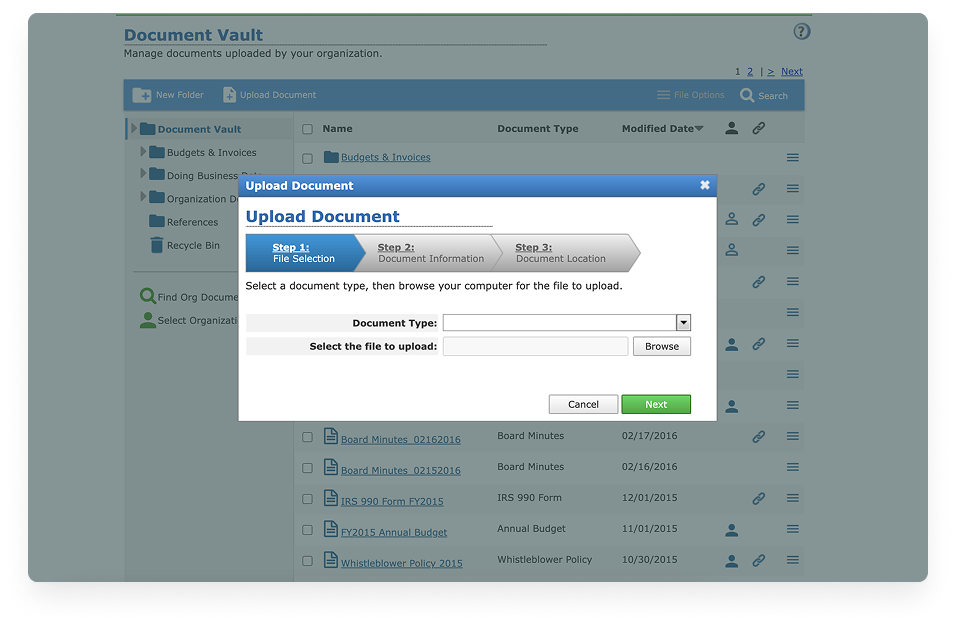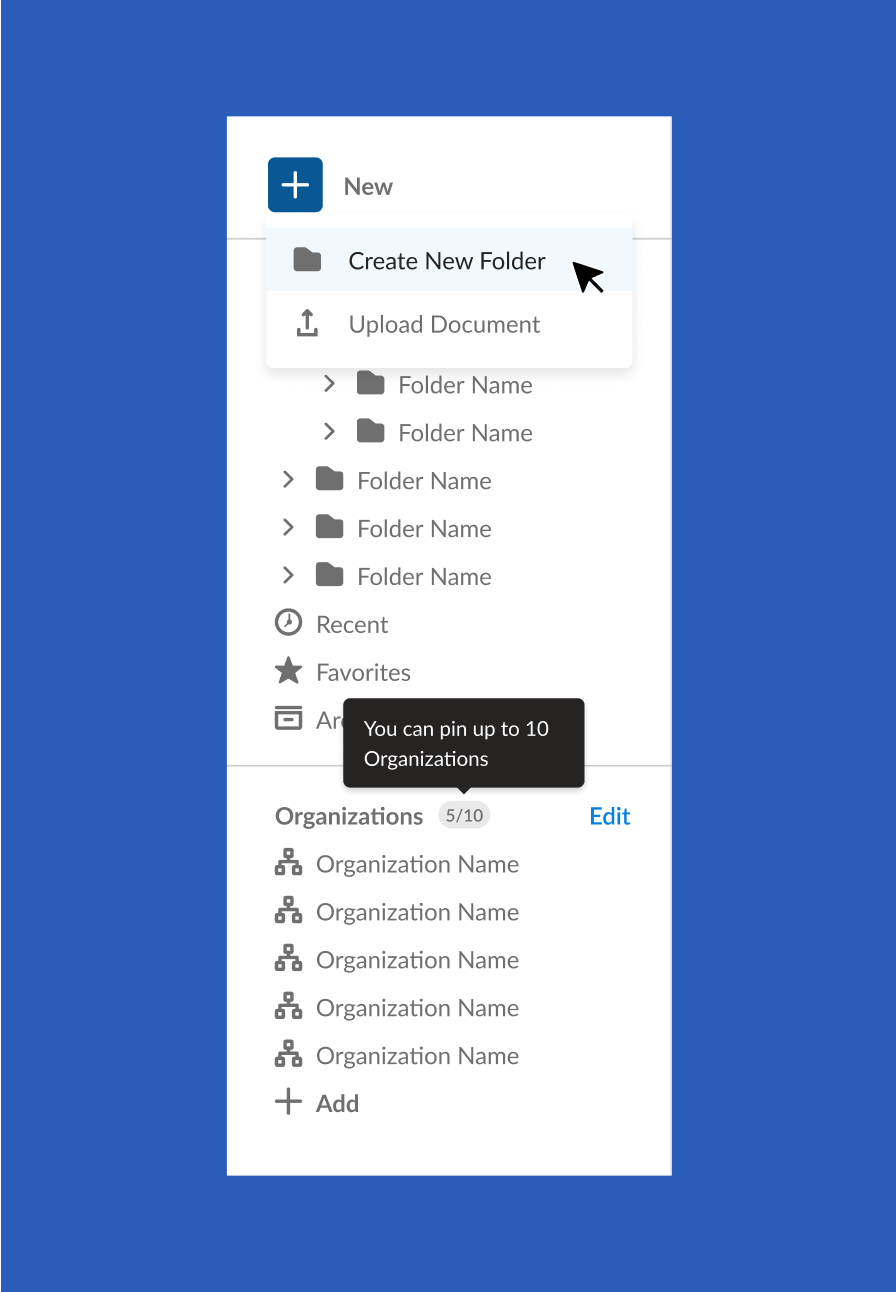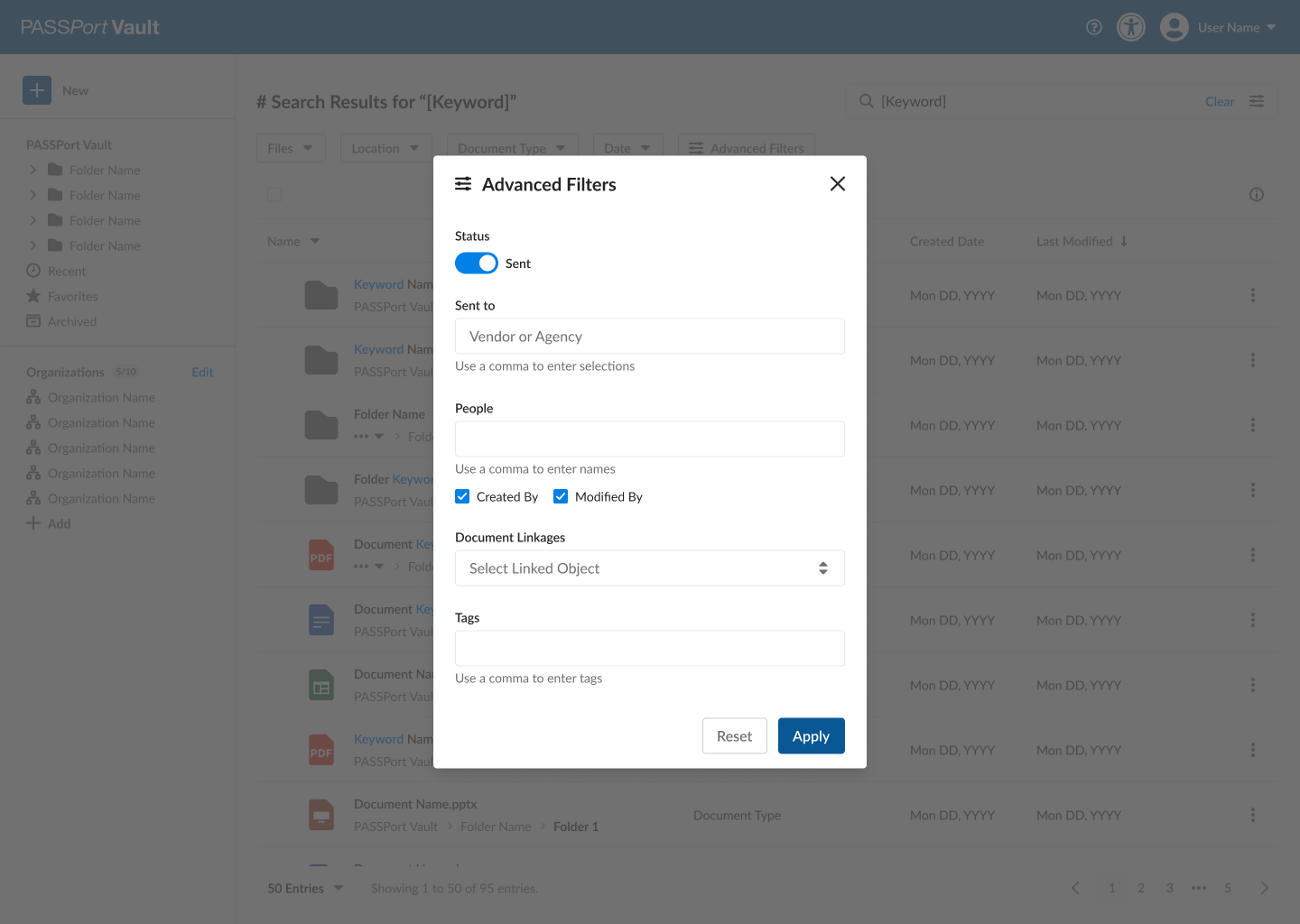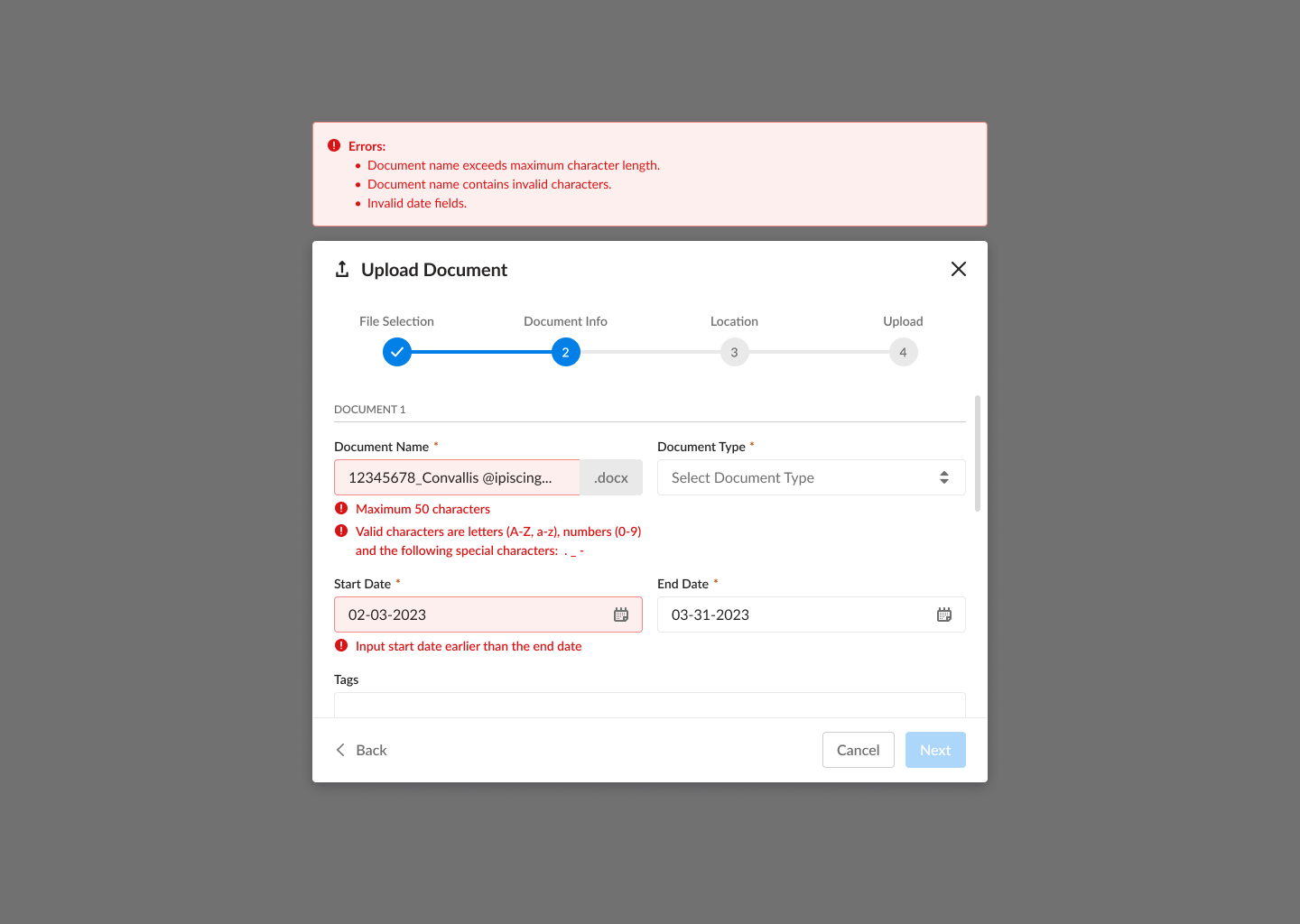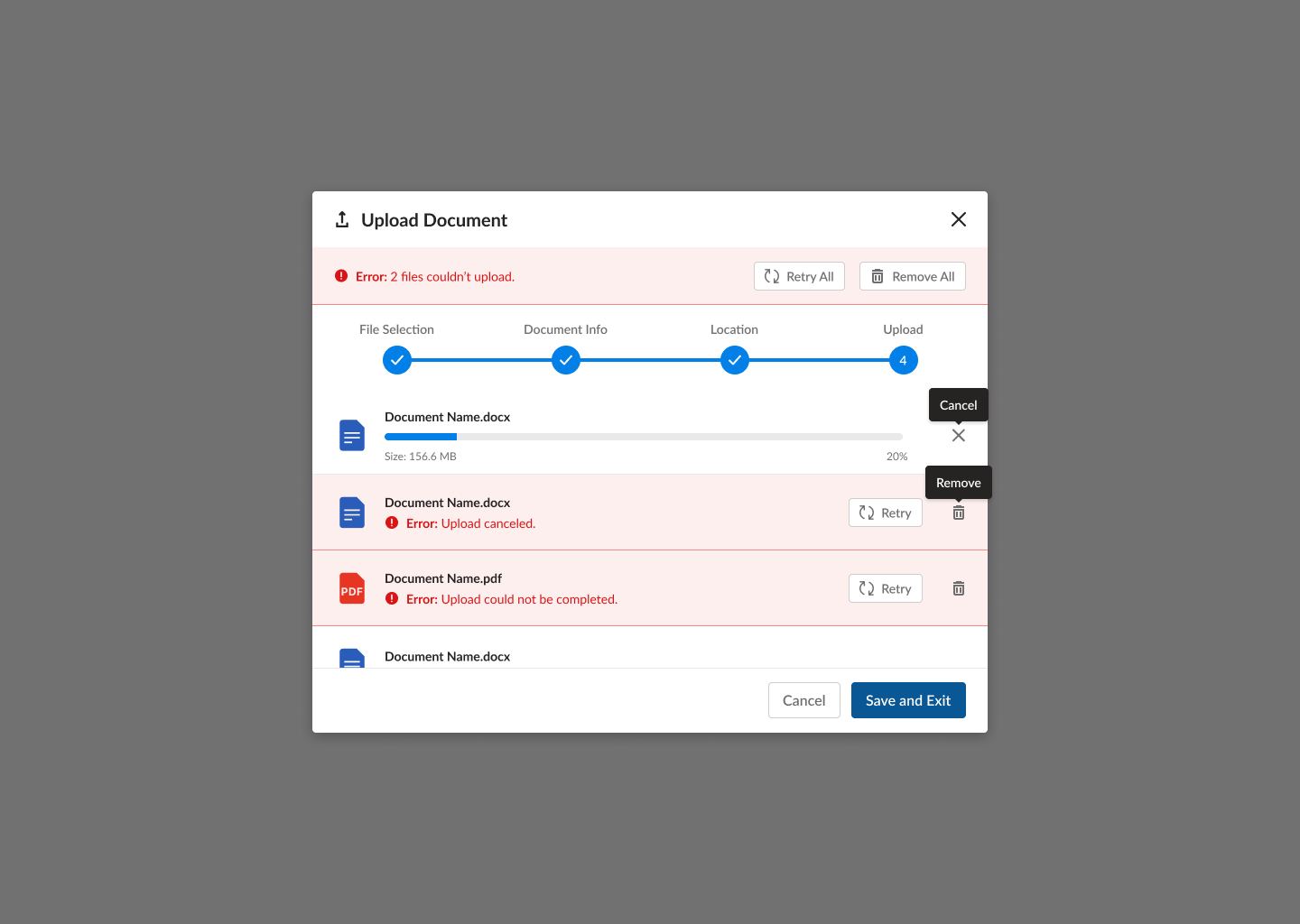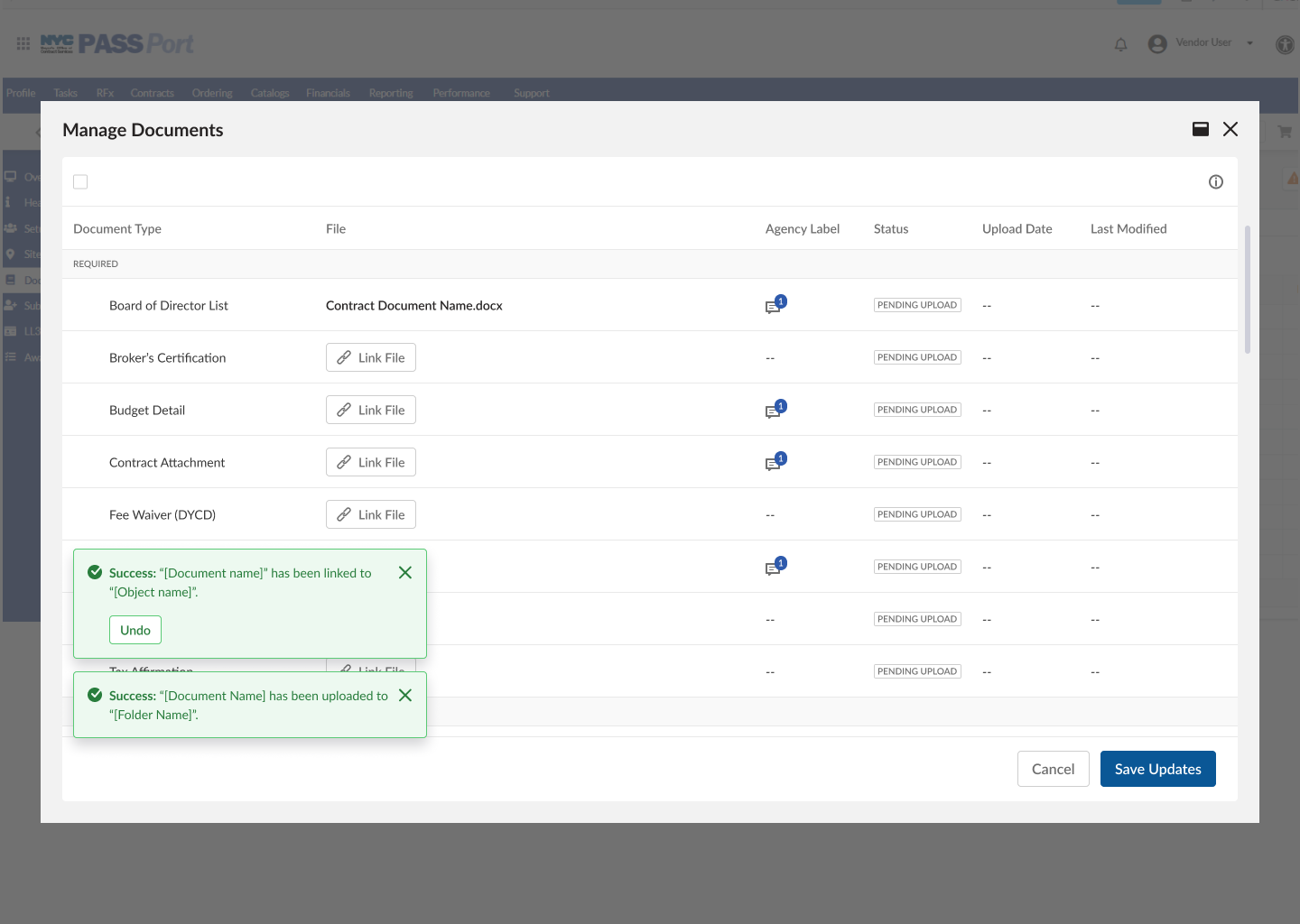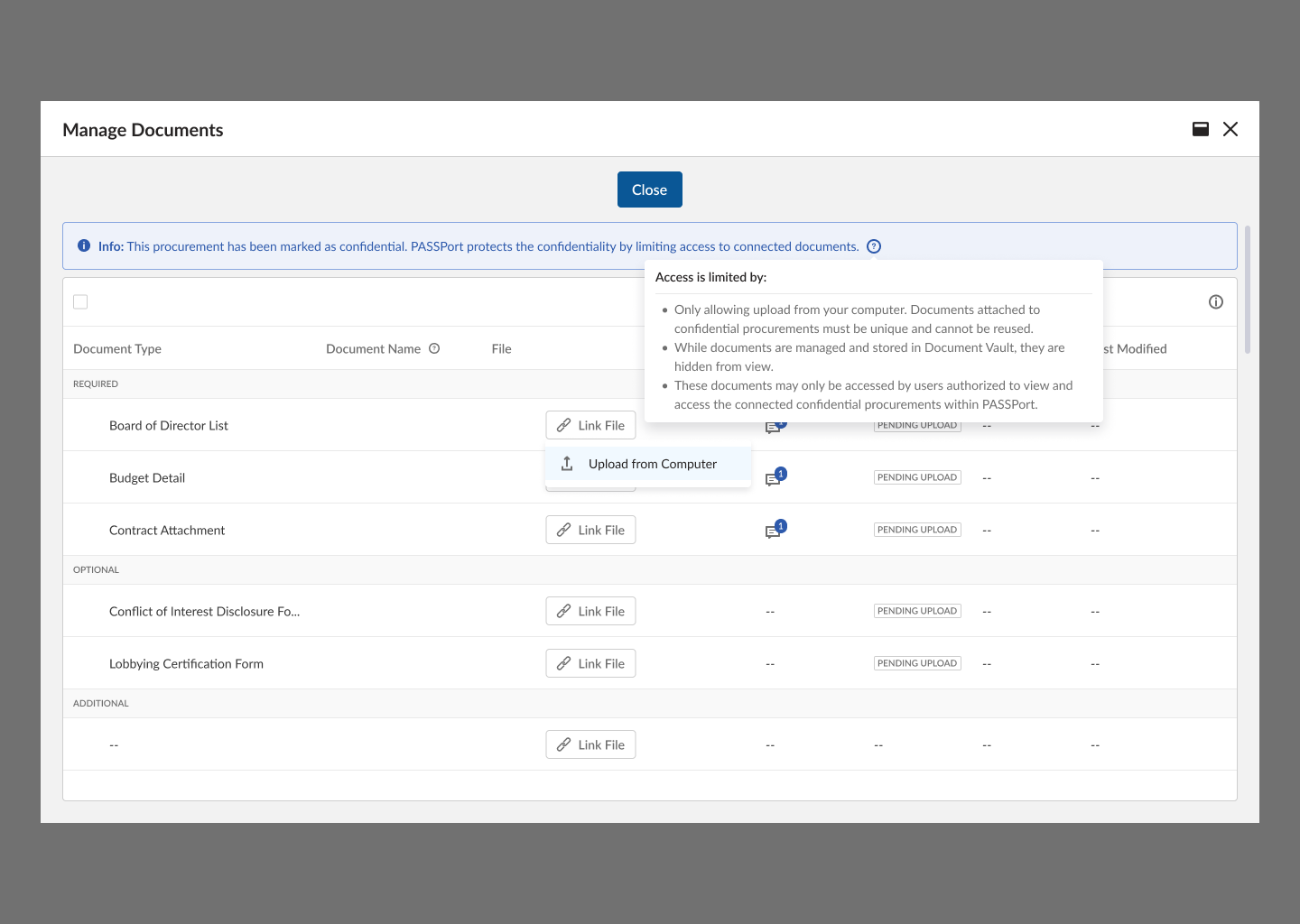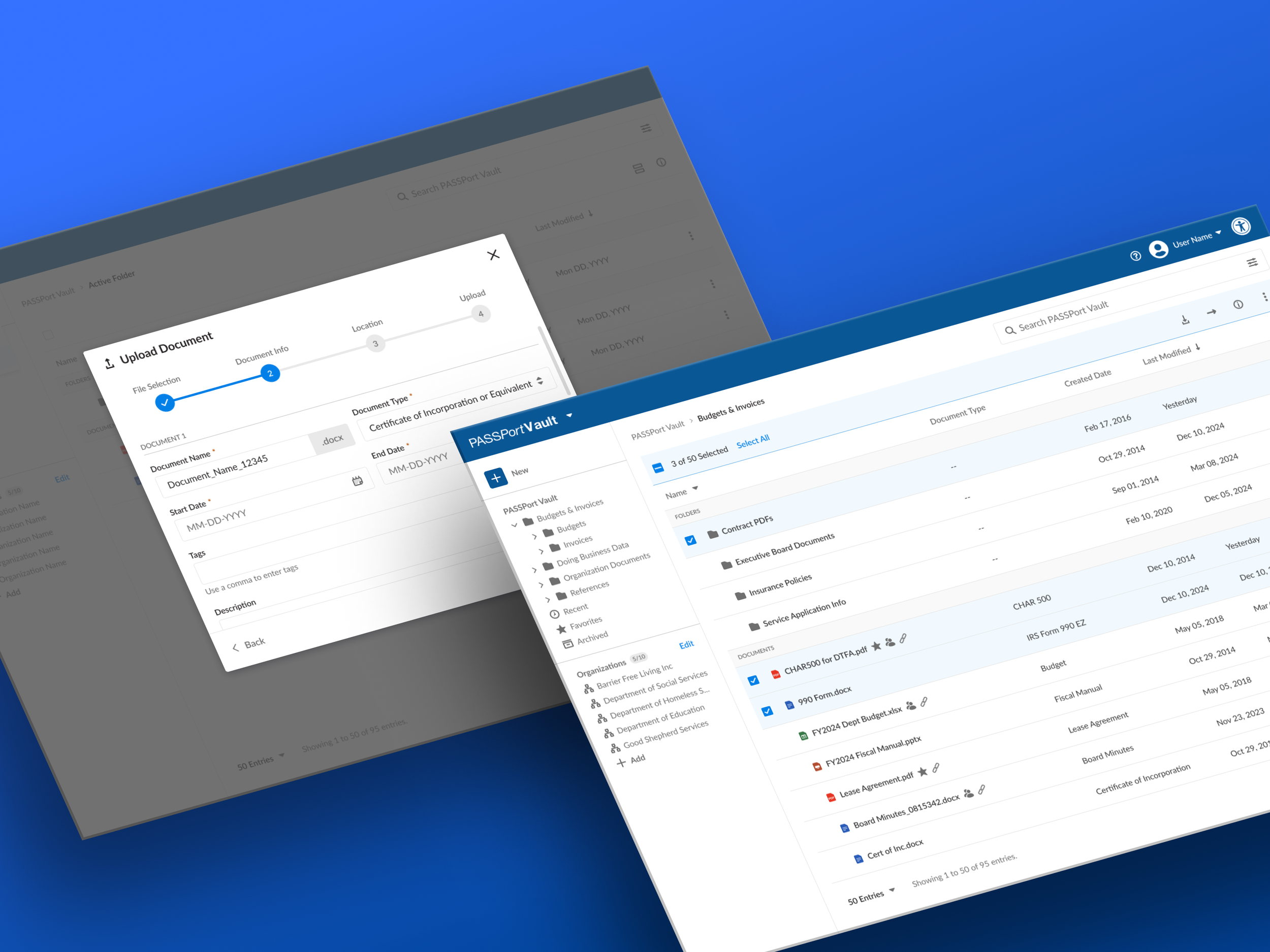
Overview
Optimising the procurement process for human service agencies and vendors
PASSPort is New York City’s digital procurement platform that connects city agencies with vendors, streamlining how contracts are registered, managed, and approved. The system serves a critical role in ensuring billions of dollars in public funding are allocated efficiently and transparently. However, due to disparate backend systems, its complexity often created friction for its users, resulting in abandoned tasks and support outreach. I partnered with the Mayor’s Office of Contract Services (MOCS) to create a unified and complete document repository, that would act as a single source of truth for the agencies reporting needs.
Role
Lead UX Designer
Client
City of New York
Timeline
1 year
Platform
Desktop
In addition to disparate backend systems, the platform’s document repository had significant tech and UX debt, presenting limited features and friction for its users.
OUTCOME
After 17 months, the client successfully relaunched a secure digital storage platform serving over 70K users – eliminating thousands of hours from their current workflow and driving a measurable increase in user satisfaction.
Challenges
Insights from a stakeholder workshop to assess platform gaps and uncover key opportunities for design.
Unclear access to data
Stakeholders find it time-consuming to locate the right data due to fragmented systems, inconsistent search functions, and unclear access points. This leads to frustration and workflow inefficiencies.
Design consideration: A streamlined and intuitive data discovery experience.
Limited data transparency
Users lack confidence in the data due to unclear sources, poor context, and limited explanations. This erodes trust, hinders decision-making, and reduces engagement.
Design consideration: Clarifying data sources and adding context to strengthen credibility.
Low adoption of existing tools
Users often avoid existing data tools due to cluttered, technical interfaces and non-actionable formats. Poor usability limits engagement, especially for non-experts.
Design consideration: Simplified, actionable presentation of data to support role-specific insights.
The original PASSPort platform had separate experiences for Vendors and Agencies. The unified platform was redesigned with three core users in mind.
01
Vendor
Individuals or small-to-large businesses seeking to win and manage contracts with the City of New York. They are less tech-savvy and may need guidance on compliance and document requirements. They often face challenges with unclear processes, and administrative burdens.
02
Agency
Procurement staff or contract managers within city agencies working to meet program timelines and budget constraints. They are experienced and process-driven but often face challenges with approval bottlenecks and complex compliance requirements.
03
Admin
Employees of MOCS who are part of the IT team or service desk. They require unique all-encompassing access to all Organisation’s vaults to assist compliance with requests for records and help users with troubleshooting.
Design principles
Clarity over complexity
Simplify workflows and legal language into clear, actionable steps to help users navigate procurement processes confidently.
Design for access and efficiency
The platform will support distinct needs across vendors, agencies, and oversight bodies while maintaining a unified experience.
Trust through transparency
Reduce frustration and foster trust with the user through clear feedback provided by the system, document status indicators, and contextual guidance throughout.
Safeguard errors
Keep users informed through visible system status and clear feedback to avoid mistakes and recover quickly.

SOLUTION
01
Enhancing the document vault’s capabilities and usability
Through multiple rounds of iterations and design critiques, I advocated for a simple but considered table design that would display personalised core action items based on the user’s access and workflow.
02
Streamlining access to documents and data discoverability with Search
I worked closely with the functional and development team to stretch the search parameters and simplify the search results display to support vendor, agency and admin requirements while maintaining a unified experience. The search bar and results page is feature-rich—leveraging contextual menus, filters, and micro-interactions, making it easy to locate files through keywords, document types, or content metadata.
03
Improving trust through clear, accessible data sources
We focused on improving data transparency by designing clearer provenance, consistent document views, and simplified access—giving agencies a more reliable understanding of what information existed, where it came from, and how to use it with confidence.
04
Reducing user errors and supporting quick recovery
We focused on clear system feedback and visible status updates throughout the platform through the use of alerts and messaging modals. A key use case was the upload flow which had to account for varying user roles, legal requirements, and contract types. I collaborated closely with the solutions architects and QA team to document all error states and edge cases, ensuring the experience was seamless, compliant, and easy to navigate.
05
Implementing safe data governance
In a complex system like PASSPort, strong data governance is essential to ensure all documents are stored, updated, linked and shared responsibly. We worked closely with MOCS’s legal and admin teams to implement constraints and ensure compliant, user-friendly copy.

Design System
Building off Liferay’s DS, I collaborated closely with the development team to build custom components that would work specifically for PASSPort’s requirements and MOCS updated branding. I worked on creating a well documented design system to streamline handoff and maintain brand consistency. This served as the source of truth during the development and QA phase.


